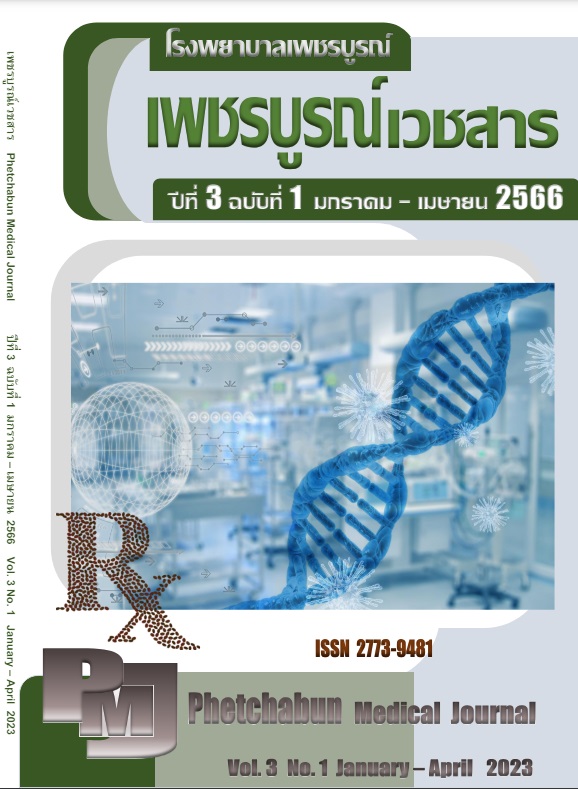The effects of using modified early warning signs (MEWS) nursing practice guidelines in sepsis patients in the surgery department at Sukhothai hospital
Keywords:
Nursing practice guidelines, sepsis, modified early warning signs (MEWS)Abstract
Surgery patients with sepsis may experience life-threatening crises that affect the functioning of various systems in the body. Using a nursing practice guideline to rapidly assess a patient's modified early warning signs (MEWS) can help prevent the occurrence of such a crisis. This quasi-experimental research aimed to study the effects of nursing practice guidelines on the use of modified early warning signs (MEWS) in patients with sepsis in the surgical department at Sukhothai hospital. The research was conducted between January-December 2022. The samples were divided into 2 groups: 1) 25 professional nurses and 2) 60 patients with sepsis divided into the experimental group received the MEWS nursing practice guidelines in sepsis patients, whereas the control group received the usual nursing practice, with 30 subjects in each group. Research instruments consisted of a demographic questionnaire, SOS score, and a record form of outcome using MEWS nursing practice guidelines. Data were analyzed using statistics including frequency, percentage, independent t-test and chi-square test. The significance level was set at 0.05.
The results revealed that sepsis patients receiving nursing care according to MEWS nursing practice guidelines had the number of recorded vital signs (25.4, 15.5, p<0.001), physician reports (2.8, 1.6, p<0.001) and discomfort signs management (2.6, 1.3, p<0.001) were significantly higher than the control group receiving normal practice nursing care.
In addition, nursing according to nursing practice guidelines using MEWS showed unplanned intensive care unit transfer (6.7%, 23.3%, p=0.048) and the incidence of mortality (0%, 36.7%, p=0.048). 0.010) were significantly lower than normal practice nursing care. In conclusion, this study suggests that the modified early warning signs (MEWS) nursing practice guidelines in sepsis patients should be applied to the use of critical warning signs in all patients with sepsis to prevent the occurrence of crises, able to monitor the symptoms and report to the physician for timely treatment, consequently, this MEWS could effectively reduce the incidence of unplanned ICU and mortality.
Downloads
Published
How to Cite
Issue
Section
License

This work is licensed under a Creative Commons Attribution-NonCommercial-NoDerivatives 4.0 International License.



